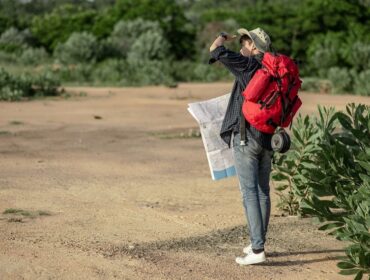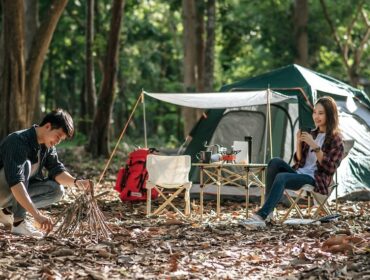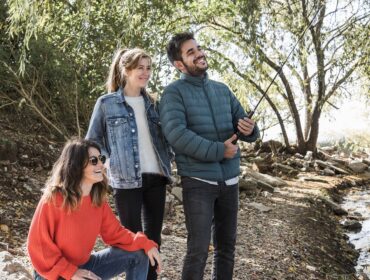Not long ago, shopping for outdoor brands meant comparing warmth, fit, or waterproof ratings. These days? Add sustainability to the checklist. Recreational camping can be harmful to the nature in ways you would never have guessed, so, the gear we use to explore nature shouldn’t harm it. More people are asking the same questions: Which outdoor brands are using recycled materials? Who offers repairs? Who’s ditching harmful chemicals? If you’ve been asking that too, you’re in the right place.
This guide isn’t about greenwashing. It’s about brands making real changes—cleaner supply chains, better fabrics, smarter design, and actual accountability. Whether you’re replacing a rain shell or building your kit from scratch, these are the names worth knowing. Let’s dig into the brands walking the talk—and building gear that’s made to last, not landfill.
NEMO Equipment: Sleep Systems That Respect the Planet
NEMO isn’t just known for award-winning design—it’s also one of the few outdoor brands actively creating gear built for recyclability. Their Endless Promise™ initiative aims to produce 100% circular products, meaning every piece can be disassembled and recycled at the end of its life. That kind of thinking isn’t just rare in the industry—it’s the future. The brand also uses Bluesign®-approved materials and PFAS-free waterproof coatings, reducing the environmental toll without compromising performance.

One of the best examples is the NEMO Disco Endless Promise Down Sleeping Bag, designed with side-sleepers in mind and built to last through years of weekend escapes. It uses RDS-certified down for warmth and comfort, plus sustainable fabrics that won’t outlive their usefulness in a landfill. Pair it with the brand’s lightweight pads or pillows, and you’ve got a sleep system that checks every box—comfort, durability, and real-world sustainability.
Sea to Summit: Pack Light, Tread Lighter
Sea to Summit might be known for ultralight backpacking gear, but they’ve quietly built a strong sustainability track record, too. From eco-conscious packaging to biodegradable soaps and responsibly sourced fabrics, the brand proves that even small items can make a big difference when it comes to impact. Their travel hygiene line and camp towels are excellent alternatives to the throwaway stuff, and they work just as well on trails as they do in international hostels.

If you’re aiming for a low-waste trip, check out the Sea to Summit Trek & Travel Liquid Soaps and Wilderness Wipes—both biodegradable, compact, and TSA-friendly. Pair them with the Tek Towel, which dries fast and lasts longer than a dozen paper towel rolls. It’s the kind of essential kit that helps you leave a site cleaner than you found it.
Jetboil: Efficient Cooking with Minimal Waste
Jetboil revolutionized the camping stove with a compact system that boils water in minutes—and their efficiency reduces not only fuel use, but also waste. While many stoves burn through single-use canisters quickly, Jetboil’s precision heat control lets you stretch each one longer. Plus, their accessories cut down on excess gear and help you prepare meals without plastic, foil, or paper filters.

One simple, impactful upgrade is the Jetboil Grande Silicone Coffee Press. It transforms your Jetboil into a full-function French press, eliminating the need for wasteful instant coffee packets or single-use filters. Add that to a highly efficient Flash Cooking System, and you’ve got a low-fuel, low-impact cook setup that delivers a hot cup and a clear conscience.
Primus: Durable Gear with an Eye on Longevity
Primus has been in the camp kitchen game for more than 130 years, and while their gear is built with performance in mind, sustainability is a growing focus. The company uses durable, repairable materials like stainless steel and hard-anodized aluminum—avoiding the fast-wear, throwaway culture of cheaper alternatives. Their packaging is also moving toward fully recyclable designs, reducing waste from the moment your order arrives.

The Campfire Prep Set includes reusable utensils and a roll-up storage case that makes cooking clean and organized. It’s a small kit with a big effect, allowing you to avoid plastic cutlery and paper napkins at the campsite. When paired with refillable fuel and a long-life stove, Primus gear proves that classic quality is still one of the most sustainable choices you can make.
Therm-a-Rest: High-Performance Sleep, Low Environmental Impact
Therm-a-Rest has focused on comfort and performance since day one—but in recent years, it’s also begun to prioritize eco-friendlier production. By integrating partially recycled materials, Bluesign®-approved fabrics, and efficient insulation technologies, the brand reduces both manufacturing waste and energy usage. More importantly, Therm-a-Rest’s products are made to last for years, not just a couple of seasons.

The Trail Pro Max Sleeping Pad (Large) is a standout for cold-weather camping thanks to its high R-value and self-inflating design. It uses less foam waste during production and offers long-term value with field-repairable parts. If you want to stay warm while keeping your footprint low, this pad delivers both trail performance and long-term sustainability.
EcoFlow: Solar Power, Zero Emissions
EcoFlow leads the charge—literally—when it comes to powering your adventures without polluting them. Their folding solar panels and rechargeable power stations are clean alternatives to gas generators and single-use batteries. Whether you’re charging lights, phones, or even a small fridge, EcoFlow gives you silent, emission-free energy that works wherever the sun shines.

One excellent pick is the EcoFlow 110W Folding Solar Panel, a portable, waterproof panel that’s easy to carry and quick to set up. It pairs with any compatible power bank or solar generator, making it ideal for weekend campers and off-grid explorers. It’s a serious upgrade for campers who want energy freedom without fossil fuels.
Flextail: Compact Tech That Cuts the Waste
Flextail designs gear for convenience—but with a sustainable twist. Their lanterns, pumps, and air inflators are all rechargeable, so you’re not constantly tossing batteries or hunting for replacements mid-trip. Less weight, less mess, and way fewer batteries in the trash.

The Flextail Max 3-in-1 Vintage Lantern does more than look good. It lights your tent, mimics a flame for campfire vibes, and doubles as a portable power bank. That means fewer cords, no need for backups, and one less reason to reach for disposable energy sources while you’re off-grid.
Final Thoughts
You don’t have to be a full-time thru-hiker to make smart choices about your gear. Whether you’re shopping for a jacket, pack, or just a base layer, every purchase is a chance to back brands doing better—for the planet and for the people making the product.
The most responsible outdoor brands are thinking big: renewable materials, closed-loop systems, and product longevity. That’s where the future of gear is heading. And that’s the direction you can help push with every piece you choose.
Choose well. Pack better. Leave less behind—on the trail and in your footprint.
FAQs
What are the most eco-friendly outdoor clothing brands?
Patagonia, Cotopaxi, and Prana top the list. All three use recycled materials, ethical manufacturing, and run gear reuse programs.
Which outdoor jacket brands are also sustainable?
Arc’teryx, NEMO, and Fjällräven all offer high-performance jackets with recycled or responsibly sourced materials and long-lasting construction.
Are big outdoor gear stores like REI eco-friendly?
Yes—REI Co-op uses recycled materials in its own gear line, offers rentals and resale, and publishes sustainability goals each year.
How can I tell if a brand is really sustainable?
Look for certifications like Bluesign, Fair Trade, and B Corp. Check if they publish impact reports or offer gear repair/recycling options.
Is eco-friendly gear more expensive?
Sometimes, yes—but it usually lasts longer and performs better. Think of it as investing in gear that’s built for the long haul, not the landfill.





